 This striking Kyushu azalea (Rhododendron Kiusianum) with its wild almost chaotic trunk is from an Art of Bonsai Project contest held in 2005. It belongs to (or belonged to?) Melvyn Goldstein. The only thing I would take issue with is the pot. Not to say that this isn’t a very nice pot (and very clean and well oiled), it’s just that a shallower glazed oval might be better. BTW: Kyushu are not Satsuki azaleas. Kyushu usually bloom in March or April (depending on where they are) while Satsuki bloom in May (again depending and thus the name Satsuki, which means fifth month).
This striking Kyushu azalea (Rhododendron Kiusianum) with its wild almost chaotic trunk is from an Art of Bonsai Project contest held in 2005. It belongs to (or belonged to?) Melvyn Goldstein. The only thing I would take issue with is the pot. Not to say that this isn’t a very nice pot (and very clean and well oiled), it’s just that a shallower glazed oval might be better. BTW: Kyushu are not Satsuki azaleas. Kyushu usually bloom in March or April (depending on where they are) while Satsuki bloom in May (again depending and thus the name Satsuki, which means fifth month).
Not enough sleep around here (and various other complaints that we won’t bother you with), so we’ll dig out a couple photos we’ve already shown and throw in a couple others. The result is a potpourri of azaleas in bloom. It probably would have been more time appropriate to show these earlier in the year, but quick and easy is the order of the day.
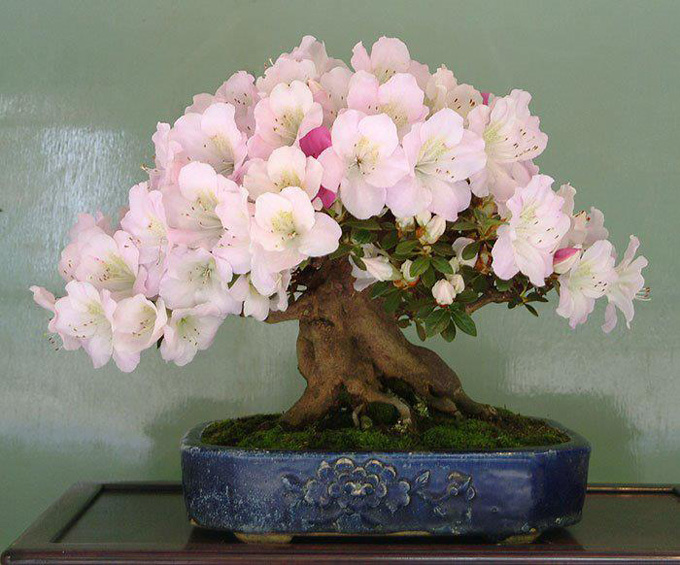 We’ve shown this delicious small satsuki before, but it’s worth another look. I originally found it on Tae Kukiwon Bonsai.
We’ve shown this delicious small satsuki before, but it’s worth another look. I originally found it on Tae Kukiwon Bonsai.
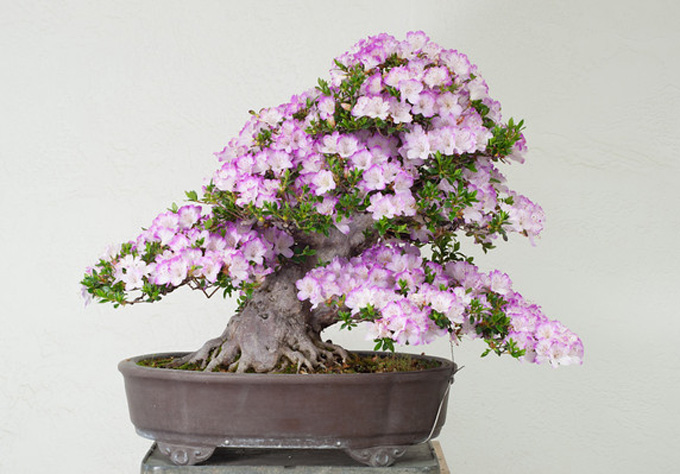 This photo popped up on a site called Smug Mug. It’s attributed to Dupuich (that would be Jonas Dupuich of Bonsai Tonight who takes and posts hundreds of excellent bonsai photos). It also says Bay Island Bonsai, so you might assume that Jonas took the photo at a Bay Island show (it didn’t show up in a quick search of Bonsai Tonight, but I suspect you could find it there with a little effort and patience). Anyway, it’s a magnificent tree with absolutely gorgeous flowers, though we might once again take issue with the pot.
This photo popped up on a site called Smug Mug. It’s attributed to Dupuich (that would be Jonas Dupuich of Bonsai Tonight who takes and posts hundreds of excellent bonsai photos). It also says Bay Island Bonsai, so you might assume that Jonas took the photo at a Bay Island show (it didn’t show up in a quick search of Bonsai Tonight, but I suspect you could find it there with a little effort and patience). Anyway, it’s a magnificent tree with absolutely gorgeous flowers, though we might once again take issue with the pot.
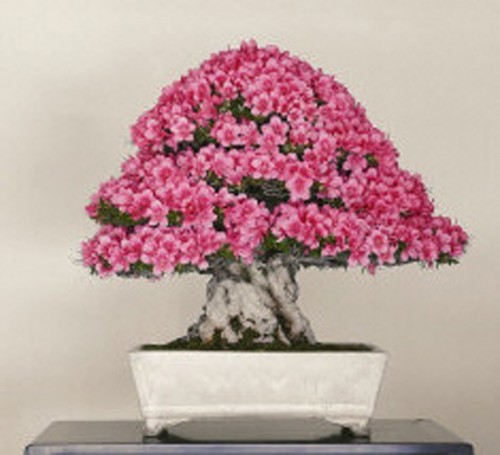 I love the flowers and especially the trunk on this one. Nice pot too. I’m not so sure about the crown, which seems a bit too perfectly shaped. Still, it’s a great tree, even though the photo is a little fuzzy (mea culpa for blowing it up). It’s from the Crespi Bonsai Museum’s site.
I love the flowers and especially the trunk on this one. Nice pot too. I’m not so sure about the crown, which seems a bit too perfectly shaped. Still, it’s a great tree, even though the photo is a little fuzzy (mea culpa for blowing it up). It’s from the Crespi Bonsai Museum’s site.
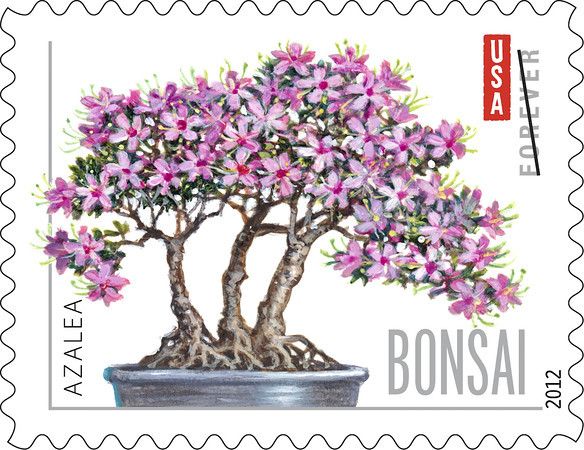 If you live in the States, you’ve no doubt seen our lovely bonsai art stamps. If you don’t and you haven’t, take a look.
If you live in the States, you’ve no doubt seen our lovely bonsai art stamps. If you don’t and you haven’t, take a look.
 I’m not complaining, but it’s hard not to notice that the shape of the trunk and whole tree for that matter, are more Shimpaku-like than azalea-like. Not to mention the very Shimpaku-like shari (deadwood on the trunk). These features combined with the brilliant multi-toned flowers, make for a very interesting bonsai. I stumbled upon the photo here.
I’m not complaining, but it’s hard not to notice that the shape of the trunk and whole tree for that matter, are more Shimpaku-like than azalea-like. Not to mention the very Shimpaku-like shari (deadwood on the trunk). These features combined with the brilliant multi-toned flowers, make for a very interesting bonsai. I stumbled upon the photo here.
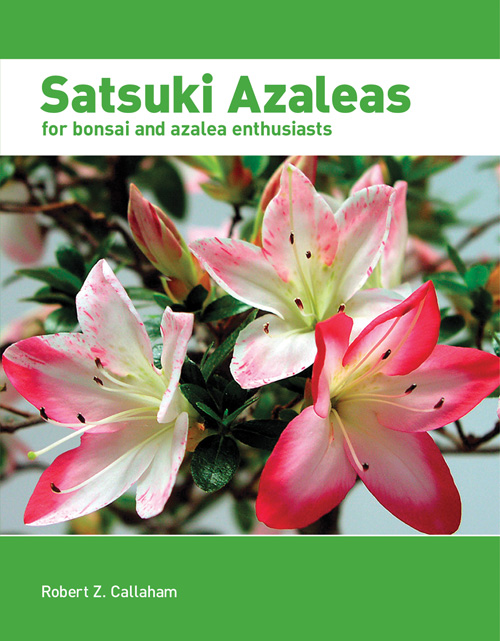 While we’re on the topic, this classic is now on special at Stone Lantern.
While we’re on the topic, this classic is now on special at Stone Lantern.
As you might surmise from the somewhat wordy captions, this post didn’t turn out quite as quick and easy as we’d hoped. Oh well…
As a fancier and grower of R. kiusianium varieties, I’m not certain that first tree is actually a kiusianium cultivar. While this information of kiusiuanium is dated by nearly 30 years ( http://scholar.lib.vt.edu/ejournals/JARS/v38n1/v38n1-bare.htm ), there is a clear tendency for the cultivars to have a lighter throat than the rest of the blossom. Also, the growth pattern of the kiusianium would not readily lend itself to a trunk like that (and it is quite apparent that this is a collected tree if it *is* a kiusiuanum, based on the growth rate of the species). Clearly the inverse is happening here. Also, compare https://bonsaibark.com/2013/06/30/quick-easy-azaleas-in-bloom/aza/ side-by-side against https://bonsaibark.com/2013/06/30/quick-easy-azaleas-in-bloom/crespi-7/ and do a little mental color correction – the blossoms look identical. Without some form of scale, it’s difficult to assess whether they are truly identical.
Summing up, I’ve seen that first image attributed as R. kiusianium in multiple places, but I remain highly skeptical that it is truly a kiusianium.